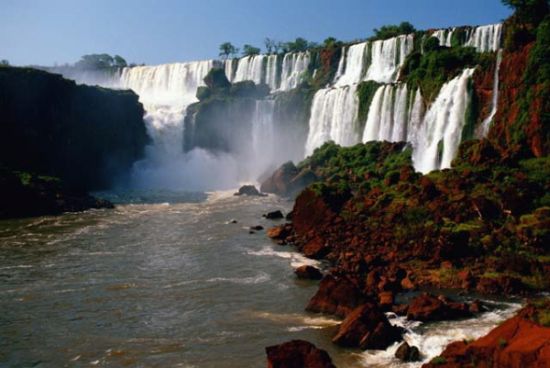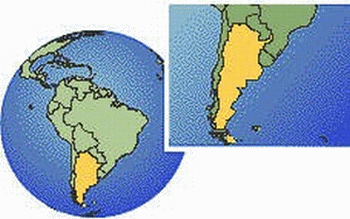Introduction: ¿Qué tiempo hace?
 These falls are in northern Argentina on the border with Brazil. Iguazú falls are the largest falls in the world. They span two miles and are visible from both the Brazilian side and the Argentine side. The word, Iguazú, comes from Guaraní, an ancient indigenous language, which meant "great waters". The result of a volcanic eruption long ago, these falls are a UNESCO World Heritage site and are an attraction that draws many visitors each year. |
In ¿Qué tiempo hace? we are going to learn about Argentina. Do you know where Argentina is? Argentina is the country you see outlined below. It is in the southernmost part of South America. The capital of Argentina is Buenos Aires, located near Atlantic coast. To those just looking at the map, it appears to be on the Atlantic coast. In reality, it is on a very large river, El Río de la Plata. At Buenos Aires, this river spans about forty-one miles across.
Argentina has some things in common with other Spanish-speaking countries but there are also many differences. One similarity is the language. Another similarity is that Mexico and Argentina both have money that is known as the peso, but they are not the same.
One major difference between Argentina and the United States is that in Argentina, the seasons are completely reversed, so their weather is just the opposite of ours. This is because Argentina is located in the Southern Hemisphere. You will notice that in Buenos Aires it is cold in July, but hot in December. In Buenos Aires, if you are going skiing for Christmas, it will most likely be water skiing.


